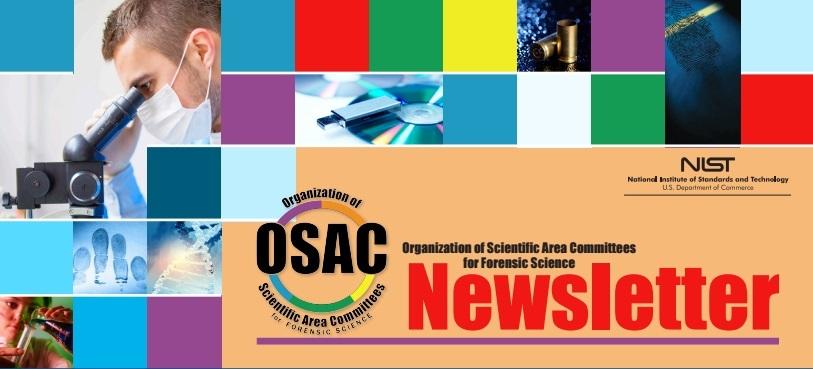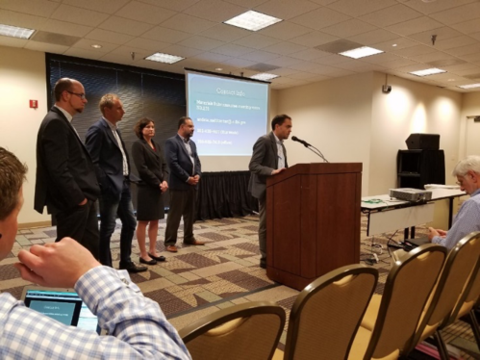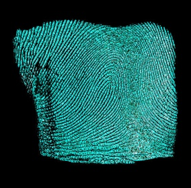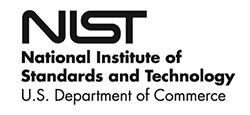OSAC Newsletter, June 2017

June 2017
OSAC Seeks International Perspectives | OSAC is Now On LinkedIn | OSAC Catalog of External Standards and Guidelines | Message from the FSSB | Message from the OSAC Affairs Director | OSAC Annual Report | Standard Developing Organization (SDO) News | Standards Under Consideration for the OSAC Registry | On the Horizon | NIST Activities
OSAC Seeks International Perspectives
While OSAC’s 568 members are all citizens of the United States, OSAC invited guest slots are often used to seek international perspectives. For example, guests and affiliates from 11 foreign countries including Australia, Canada, Germany, Italy, Israel, the Netherlands, New Zealand, Spain, Sweden, Switzerland, the United Kingdom attended the full OSAC meeting on April 18-21, 2017.
Typically, these guests and affiliates attend individual subcommittee meetings, where their input is heavily considered during conversations about forensic science standards. For example, Toby Wolson, chair of the Bloodstain Pattern Analysis (BPA) Subcommittee indicated that “Bloodstain pattern analysts are a global community of experts that have worked together to improve BPA since the late 1990’s. Currently the BPA Subcommittee has international affiliates from Australia, New Zealand, Europe and Canada that are very active in the development of BPA standards and guidelines in their countries. As a global forensic community, the BPA Subcommittee believes it is important to include our international partners in the development of the standards that will be used in the U.S. and as guidance for developing strong BPA programs in other countries.”
International perspectives and insights were a key component of the recent Forensic Interpretation of Chemical Data panel, also held in Leesburg, VA, moderated by Jose Almirall, Chair of the Chemistry/Instrumental Analysis SAC. The purpose of the panel was to address and discuss issues related to the different approaches to interpreting chemical data, with a focus on glass evidence. These briefings were intended to help the OSAC with future deliberations and approaches related to glass evidence.

Panel speakers included domestic and international speakers, who provided insights from the perspective of practitioners, researchers, forensic statisticians, and engineers:
- Dr. Peter Weis, from the Bundeskriminalamt in Wiesbaden, Germany: “Forensic Glass Comparison Analysis Using LA-ICP-MS—Two Decades of Research and Casework”
- Dr. Peter Vergeer from the Netherlands Forensic Institute in The Hague: “Breaking News: Evaluating Glass Evidence for Origin of Source Questions Towards Numerical Likelihood Ratios”
- Professor Daniel Ramos from Madrid, Spain: “Likelihood Ratio Computation in Forensic Chemistry: Learning Lessons from Other Fields”
- Andria Mehltretter, from the FBI Laboratory: “A Trace Evidence Approach to Interpretation.”
OSAC is now on LinkedIn
OSAC Affairs has secured a LinkedIn account to promote OSAC and OSAC-related activities. This venue will allow us to share our most recent developments and activities with our members and the public.

Follow the OSAC LinkedIn showcase page for the latest updates.
OSAC Catalog of External Standards and Guidelines
Visit the OSAC Catalog of External Standards and Guidelines page.
Version 4 of the Catalog has been posted to the OSAC website. The OSAC Catalog of External Standards and Guidelines is a collection of standards, guidelines and other documents applicable to forensic science. None of the documents in the catalog has been developed or approved by OSAC (the Organization of Scientific Area Committees). The catalog was compiled by NIST staff in early 2015 for OSAC members to assess existing standards, guidelines and best practices that are already publicly available. The catalog was recently updated in April 2017. The catalog is available to download as a sortable Excel file (link opens an Excel .xlsx file). It contains the titles and source information for more than 700 standards, guidelines and related documents. The catalog also lists web addresses for documents that are available online.

Coming Soon in Fall 2017: OSAC Forensic Science Lexicon
In 2016, the OSAC Forensic Science Standards Board (FSSB) directed all Scientific Area Committees (SACs) and Subcommittees to conduct a terminology review exercise for their disciplines. The purpose of this exercise was to help identify discrepancies or dual meanings for particular terms.
For example, as part of this exercise, committees identified multiple ways that the term “bias” is used, including:
- Bias: The difference between the mean of several measurements under identical conditions, to a known “true” value. It is often reported as a percent difference. (Source: Standard Practices for Method Validation in Forensic Toxicology)
- Bias: Preconception; prejudice; taint; partiality. Since most persons have biases, the issue is whether the bias is such that impartiality cannot be achieved and a fair outcome cannot occur. Any predisposition that a judge or arbitrator may have may be grounds for recusal. Any predisposition that a witness may have may be grounds for impeachment by cross‐examination. Any predisposition that a juror may have may be grounds for excusal determined by through a process known as voir dire. (Source: Barron's Legal Guides, Law Dictionary, Fifth Edition, Gifis, S. H.2003)
- Bias: The difference between the expectation of the test results and an accepted reference value. (Source: SWGDRUG Glossary of Terms and Definitions)
- Bias: The quantitative characterization of systematic error. (Source: Vosk, T. (2013). Measurement Uncertainty. Kirkland, WA: Elsevier Ltd.)
SACs and Subcommittees sourced over 4,550 terms from existing documentary standards, guidelines, and best practice documents and other authoritative sources. Some definitions were newly created by the OSAC Subcommittees.
Work is now underway to make the full lexicon available to the public. It is OSAC’s hope that the first edition of the lexicon will help stakeholders determine which terms could use further clarification, both within and between disciplines. OSAC will update the lexicon quarterly—with the ultimate goal of encouraging a common vocabulary across forensic science, where possible, and to clearly identify differences where necessary.
Message from the OSAC Affairs Director

OSAC Vacancies Related to Expiring 3-Year Terms
NIST's Organization of Scientific Area Committees (OSAC), the 568-member group working to develop a uniform set of forensic science standards and guidelines, is seeking to fill member vacancies on its committees and subcommittees. Vacancies will be available because a number of memberships with 3-year terms expire this October. If the current member is interested in seeking a second term, he or she will be considered for the vacancy along with all other applicants who express interest in serving. Those who are interested and have not previously applied must submit an application in order to be eligible. Applications submitted by June 30, 2017, will be considered for the positions opening in October. All applications will be kept on file for future vacancies and affiliate roles. If you have already submitted an application previously, you do not have to submit a new one unless your contact information or other answers have changed since your original application.
OSAC Annual Report
The OSAC Annual Report, to be published in September 2017, will describe and summarize OSAC activities between February 2016-February 2017.
Standard Developing Organization (SDO) News
This section describes SDO activities relevant to OSAC and the forensic science community.
New Work Items Initiated
The following work items are underway:
The American Academy of Forensic Sciences (AAFS) American Standards Board (ASB)
Project Initiation Notification System (PINS) were published on page 12, in ANSI Standards Action on June 2, 2017. This will begin a 30-day period for public comment on the initiation of the ASB’s work on the documents listed below.
New Standards:
BSR/ASB Std 028-201x, Wildlife Forensics Morphology Standard
This document describes morphology, which is the study of form. In a wildlife forensic context, it is the discipline using physical comparison to identify wildlife parts and products, typically to the family, genus, or species source. Depending on the nature of the evidence, a variety of macroscopic and microscopic comparison techniques may be employed. Project Need: Wildlife morphology is a unique discipline within the field of forensics. This document provides minimum standards for wildlife forensic analysts in the subdiscipline of morphology which allows for conformity among laboratories.
BSR/ASB Std 029-201x, Wildlife Forensics Report Writing Standard
This document describes the information to be provided in reports of wildlife forensic examinations for use in legal proceedings. Requirements for both genetic and morphological examination reports are covered. Forensic reports serve a variety of audiences and must provide a clear and concise summary of methods, results, and limitations for the use of the investigator, the court, and the litigants. Project Need: The field of wildlife forensics is very diverse and this document was written to ensure that all laboratories, including academic and research laboratories , have a standard to follow for report writing purposes. Following these standards will allow all wildlife forensic laboratories to include all necessary information in a final written report.
Project Initiation Notification System (PINS) were published on page 40, in ANSI Standards Action on June 9, 2017. This will begin a 30-day period for public comment on the initiation of the ASB’s work on the documents listed below.
BSR/ASB BPR 037-201x, Guidelines for Opinions and Testimony in Forensic Toxicology This document delineates the guidelines for practices in forensic toxicology opinions and testimony. Project Need: The field of forensic toxicology often requires expert testimony and opinions to be offered in criminal and civil proceedings. This document will serve as a guide for those employed in the field, setting boundaries as to what is scientifically supportable and what is not. Stakeholders: Forensic toxicologists providing testimony in criminal and civil proceedings.
BSR/ASB Std 036-201x, Standard Practices for Method Validation in Forensic Toxicology This document delineates minimum standards of practice for validating analytical methods in the field of forensic toxicology. Project Need: The field of forensic toxicology does not have a single resource available to explain the expectations of method validation. Instead, laboratories rely on documents from related fields or develop their own validation practices. This document will serve as the standard for laboratories validating methods in the field and will help ensure consistency from laboratory to laboratory.
ASTM International E30 on Forensic Science
E30.1 Criminalistics
WK59310 – Standard Guide for Analysis of Clandestine Drug Laboratory Evidence. This work item is a revision to existing standard E2882-12.
Draft Standards Open for Public Comment:
The American Academy of Forensic Sciences (AAFS) American Standards Board (ASB)
The public comment period has opened for the following four AAFS Standards Board (ASB) documents.
The two documents shown below were posted in the May 19, 2017, issue of the American National Standards Institute’s (ANSI’s) Standards Action (the comment deadline is July 3, 2017):
- ASB Standard 011, Scope of Expertise in Forensic Document Examination, First Edition
- ASB Standard 020, Standards for Validation Studies of DNA Mixtures, and Development and Verification of a Laboratory’s Mixture Interpretation Protocol, First Edition
The next two documents were posted in the May 26, 2017, issue of ANSI’s Standards Action (the comment deadline is July 10, 2017):
- ASB Best Practice Recommendation 007, Postmortem Impression Submission Strategy for Comprehensive Searches of Essential Automated Fingerprint Identification System Databases: Best Practice Recommendations for the Medicolegal Authority
- ASB Standard 018, Validation Standards for Probabilistic Genotyping Systems
Please visit the Notification of Standard Development and Coordination area of the AAFS Standards Board website to view the draft document and to provide comments. Please send any questions to asb [at] aafs.org (asb[at]aafs[dot]org).
Superseded Standards:
Clinical Laboratory Standards Institute (CLSI)
CLSI C52 A2 2007 (Edition 2), Toxicology and Drug Testing in the Clinical Laboratory was superseded by CLSI C52 2017 (Edition 3)
Standards Australia
AS 5483:2012, Minimizing the Risk of Contamination in Products Used to Collect and Analyze Biological Material For Forensic DNA Purposes was superseded by AS ISO 18385 2017
Standards Under Consideration for the OSAC Registry
The aim of the Organization of Scientific Area Committees for Forensic Science (OSAC) is to identify and promote technically sound, consensus-based, fit-for-purpose documentary standards that are based on sound scientific principles. This will be achieved through the OSAC Registry. A standard or guideline that is posted on the Registry demonstrates that the methods it contains have been assessed to be valid by forensic practitioners, academic researchers, measurement scientists, and statisticians through a consensus development process that allows participation and comment from all relevant stakeholders.
Want to know the status of standards documents that are under consideration for the OSAC Registries? Please visit the Standards Under Consideration for the OSAC Registry page.
On the Horizon

• (OSAC Presentations) August 6-12, 2017 at the Annual IAI International Forensic Educational Conference (Atlanta, GA)
• (Internal OSAC Meeting) Fall OSAC Meetings, September 25-29, 2017, Tampa, FL: SAC + Resource Committees, September 25-26; OLSS 2.0 Meeting (FSSB + 25 Subcommittee Chairs), September 27; FSSB Meeting, September 28-29
• (January Subcommittee Meetings) January 16-19, 2018 - Chemistry/Instrumental Analysis SAC + Subcommittees, Crime Scene/Death Investigation SAC + Subcommittees and ½ resource committees; January 23-26, 2018 – Biology/DNA SAC + Subcommittees, Digital/Multimedia SAC + Subcommittees, Physics/Pattern Interpretation SAC + Subcommittees and ½ resource committees
NIST Activities


Do You Have What It Takes to be a Forensic Fingerprint Examiner?
With support from NIST, experts are developing tests to help identify people with the pattern-matching skills needed for analyzing fingerprints. Try your eye on a few of the questions.

